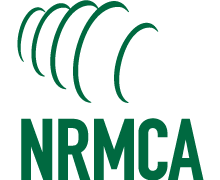
| Archive | nrmca.org | E-Store | Conferences & Events | Certifications | InFocus | Membership Directory |
OSHA Publishes Long-Awaited New Silica Exposure Standard On September 12, the U.S. Department of Labor’s Occupational Safety and Health Administration (OSHA) published in the Federal Register a proposal to overhaul the current allowable exposure limits for "respirable" crystalline silica. OSHA’s proposed rule is broken into two separate rules, one for general industry and maritime (which the ready mixed concrete industry falls under) and another for the construction industry. In the ready mixed concrete industry, respirable crystalline silica is typically found during chipping out of concrete mixer drums or possibly while concrete mixer truck drivers are on an active construction site. OSHA estimates that the ready mixed concrete industry currently has 43,920 workers currently exposed to respirable crystalline silica, 32,110 of which are exposed to levels above the new proposed permissible exposure limit (PEL).
Although NRMCA is still analyzing the proposed rule, these are the main elements:
• Reducing the PEL from 100 μg/m3, averaged over an 8-hour day, down to just 50 μg/m3, averaged over an 8-hour day;
• Required measuring of silica that workers can be exposed to if it is at or above 25 μg/m3, averaged over an 8-hour day;
• Limiting worker access to areas where the PEL is above 50 μg/m3;
• Required dust controls to reduce worker exposure to limits above the new PEL;
• Employers will be required to provide respirators to workers when dust controls cannot reduce worker exposure to limits above the new PEL;
• Medical exams every three years for workers who are exposed to limits for 30 or more days a year above the new PEL;
• New worker training; and
• New recordkeeping requirements.
OSHA suggests the new proposed standard will save roughly 700 lives and prevent 1,600 new cases of silicosis. OSHA estimates average net benefits of about $2.8 to $4.7 billion annually over the next 60 years, with a cost of about $1,242 for the average workplace. OSHA estimates the new standard to cost companies with less than 20 employees about $550.
The proposal’s comment period lasts until December 11, which will be followed by a public hearing scheduled for March 4, 2014, in Washington, DC. Click here to view the proposed rule, fact sheets, frequently asked questions (FAQs) and more. For more information, contact Gary Mullings or Kevin Walgenbach.
|
|
|





